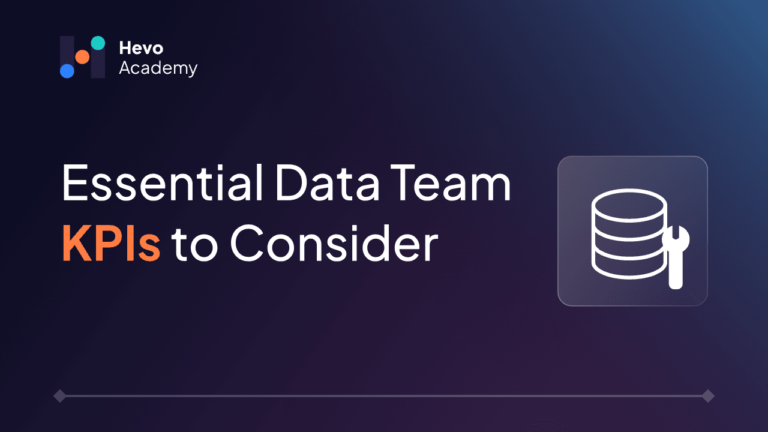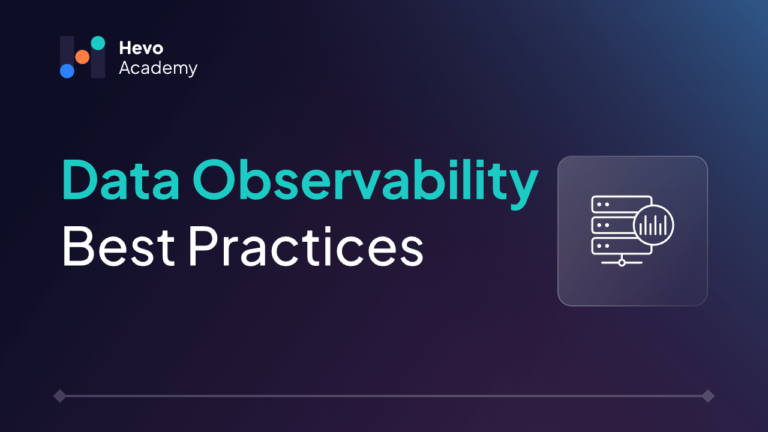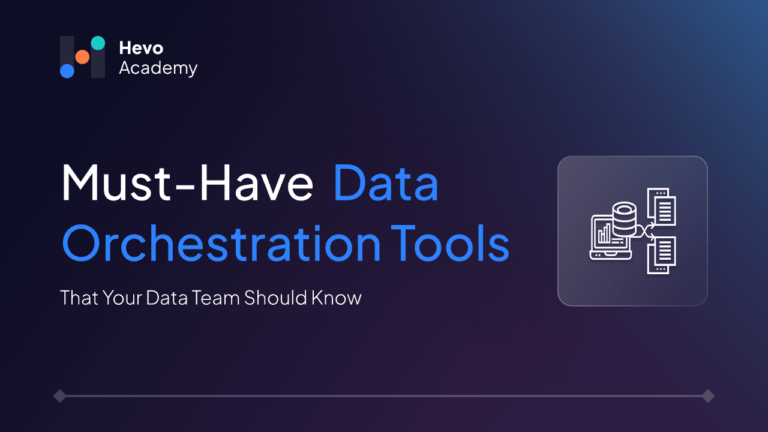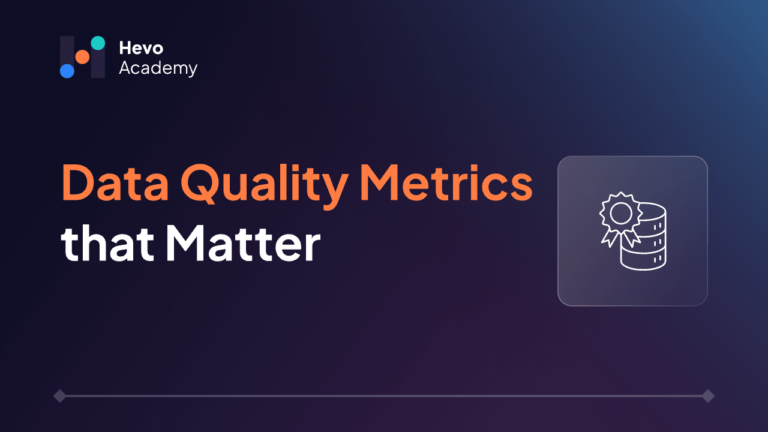Assessing your data team’s performance isn’t just a formality; it’s key to driving intelligent, data-driven business decisions. Choosing Data Team KPIs that make a difference is a real challenge. In this article, we’ll understand the most crucial Data Team KPIs for Data Engineering, Data Analytics, and Data Science teams and learn how to align these metrics with your business goals.
Table of Contents
Why Are Data Team KPIs Important?
Data is crucial for any organization, and teams that manage it are essential to success. Data teams are responsible for collecting, analyzing, and generating reports on data to make business/managerial decisions for business growth. But how do we ensure that the data team performs efficiently and at its best? Tracking several key performance indicators will help us get a clear picture of data team performance and areas for improvement.
Empower your data team to achieve their KPIs effortlessly with Hevo’s no-code, zero-maintenance ETL platform. Hevo streamlines data integration, allowing your team to focus on deriving actionable insights rather than managing complex pipelines.
With Hevo, you can:
- Connect to 150+ plug-and-play integrations effortlessly
- Ensure seamless syncing of historical data without manual intervention
- Automate column mapping from source to destination for accurate data delivery
Discover why Hevo is rated 4.7 on Capterra and trusted by companies like Whatfix and RXNT to enhance data team KPIs achievement and performance.
Get Started with Hevo for FreeUnderstanding Data Team KPIs
Data Key Performance Indicators (KPIs) are metrics that assess your data teams’ effectiveness and identify areas for improvement.
Types of KPIs
There are three levels of values and associated metrics that Data Teams should be measuring:
1. Program Value
- Tracking Progress, Completeness, and Quality of Work: Monitoring the progress and quality of work done by data teams.
- End-User Tracking: Allowing end-users to track stakeholders’ contributions. These metrics help data teams capture customer satisfaction and stakeholders’ contributions. It’s essential to maintain ongoing communication with data consumers, conduct regular surveys, and establish clear, measurable goals for stakeholders to align with.
- User Experience and Satisfaction: Quantifying user experience and satisfaction by tracking escalations, tickets created for data access, and data quality issues. The goal is to achieve zero escalations.
2. Operational Value
- Cost Efficiency: Apart from tracking user experience and stakeholder contributions, it is important to save costs and drive efficiency in how data teams and their end-users operate.
- Financial Analysis: Monitoring the cost of user licenses, computing, and storage resources. Data teams have ample opportunities to optimize costs by improving complex and resource-intensive queries, removing unused data pipelines, and deprecating dashboards.
- Time-to-Value for Technical Implementations: Measuring the level of effort or man-days required to complete solution approaches.
- Data Team and Data Consumer Surveys: Conduct surveys to determine how long it took to complete tasks, the number of repetitive tasks, and the number of bugs introduced. Similarly, for data consumers, measure how long it took to serve their data requests, the time spent on data discovery, etc.
3. Business Value
While tracking the performance of data team programs and operational improvements is crucial, the opportunities for these improvements are finite. To continue demonstrating their value, data teams must go beyond simply fulfilling requests—they need to understand how data is being used and its impact. This requires a shift from merely servicing requests to becoming true partners with business users.
Traditionally, data teams have focused on building new capabilities or handling requests that an analyst or data-savvy business user would then take forward. But to make an impact, it’s essential to grasp the underlying purpose of these requests and to follow up on their outcomes.
Key KPIs for Data Analytics Teams
- Data Accuracy and Quality: Metrics to measure the accuracy, completeness, and reliability of data. Predicting trends and patterns is one of the advantages of data analytics, so it is important to track the accuracy of predictions to ensure that the data analytics team is providing valuable insights.
- Data Processing Time: Measuring how long it takes to process and analyze data, and how quickly the team can generate insights.
- Number of Insights Generated per Month: This KPI shows how quickly your data analytics team can understand and find data patterns.
- Number of Decision-Makers Using the Insights: If decision-makers are using the generated insights rarely or occasionally, it means they are not utilizing their potential fully. If they are using them regularly, they will get more value out of it. Therefore, it is important to understand consumers’ access to insights.
KPIs for Data Engineering Teams
- Data Pipeline Efficiency: Metrics for monitoring the performance and reliability of data pipelines. This includes the number of errors or incidents reported and the turnaround time to fix those issues, as well as the number of new features delivered per month.
- Success Rate in Automating Data Pipeline Deployments: By measuring how often automated deployments are successful, we can reduce the massive amount of effort involved in the manual deployment of data pipelines.
- System Uptime and Downtime: Tracking the availability and reliability of data infrastructure. The more uptime, the less your consumers will experience disruptions in your data pipeline.
KPIs for Data Science Teams
- Model Accuracy and Performance: Metrics such as precision, recall, and F1 score for evaluating machine learning models.
- Model Deployment Frequency: Measuring how often new models are deployed into production, as well as the number of models built and deployed per month. This KPI reflects the business problems your data science team solves.
How to Implement and Track KPIs
Once you have figured out the Data Team KPIs needed to track for your teams, it is crucial to communicate these to stakeholders through dashboards. Creating a dashboard is an art.
Best Practices for Creating KPI Dashboards
- Keep It Simple and Uncluttered: Limit the number of KPIs displayed.
- Make It Actionable: Ensure every KPI on your dashboard has actionable insights.
- Use Visual Cues: Use appropriate colors, sizes, and shapes to draw attention to important data on the dashboard.
Tools and Platforms
There are many data visualization tools available in the market, like Tableau, Apache Superset, and Power BI. Select the tool based on the expertise available within your team. Use the right set of charts to display each tile on your dashboard.
Regular Review and Adjustment
Regularly update the KPI dashboards with newly introduced or updated metrics.
Conclusion
In essence, data teams can drive real business success by staying curious and committed to the value of their work. By consistently gathering and analyzing both quantitative and qualitative data before making changes, and by tracking the impact of these changes against a clear baseline, they can effectively communicate their value to stakeholders. Aligning Data Team KPIs with business objectives, using data visualization for clear tracking, and fostering a data-driven culture will ensure that KPIs are not just numbers but powerful tools for achieving organizational goals.
Try Hevo for no-code, zero-maintenance data integration, and keep your data teams up to date. Sign up for a 14-day free trial today.
Frequently Asked Questions
1. How to Measure Data Team Performance?
Data team performance can be measured using Key Performance Indicators (KPIs) such as data accuracy, data processing time, data pipeline efficiency, and system uptime. Additionally, tracking metrics like the number of insights generated, stakeholder satisfaction, and the success rate of data model deployments provides a clear picture of the team’s effectiveness and areas for improvement.
2. What Are the Goals of a Data Team?
The primary goals of a data team are to ensure data accuracy, improve data accessibility, and enable data-driven decision-making across the organization. They aim to build efficient data pipelines, deliver actionable insights, and support business objectives by leveraging data effectively.
3. What Are KPIs for Data Analytics?
KPIs for data analytics include data accuracy, data processing time, the number of insights generated per month, and the number of decision-makers utilizing these insights. These KPIs help evaluate the effectiveness of the analytics team in providing timely and valuable insights to the business.
4. What Are the KPIs for Data Strategy?
KPIs for data strategy focus on aligning data initiatives with business goals. Key metrics include data governance maturity, data quality, the success rate of data-driven projects, data usage across departments, and the impact of data initiatives on business outcomes.
5. How to Measure the ROI of Your Data Team?
The ROI of a data team can be measured by evaluating the financial impact of data-driven decisions, cost savings from optimized processes, and the value generated from improved data accessibility and quality. Tracking metrics such as the reduction in manual work, increased revenue from data insights, and efficiency gains also helps quantify the team’s contribution to the business.






